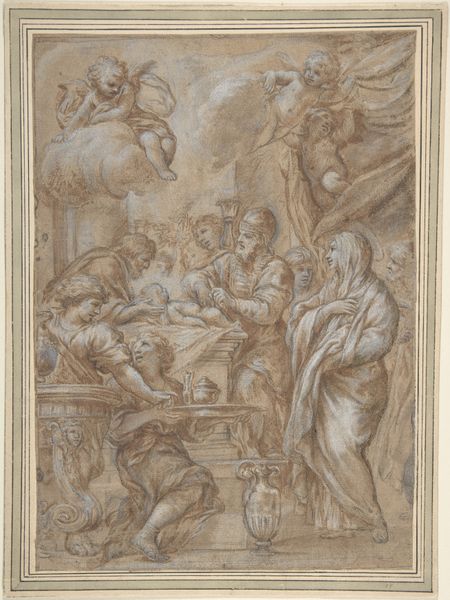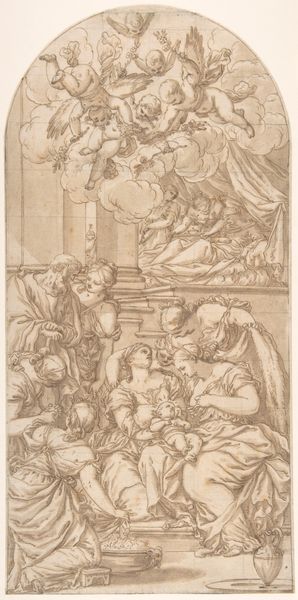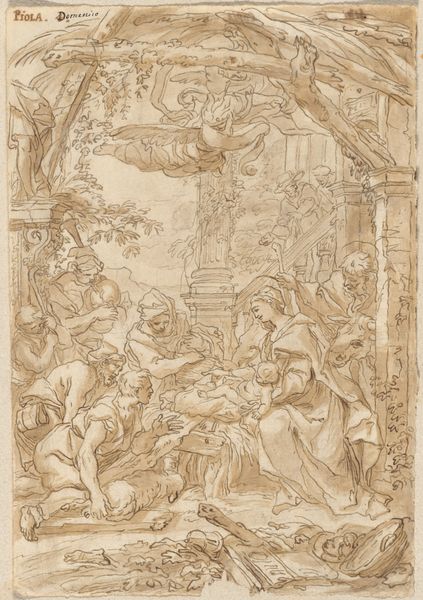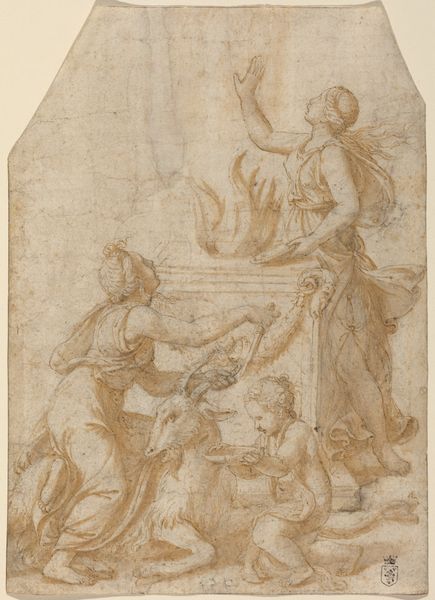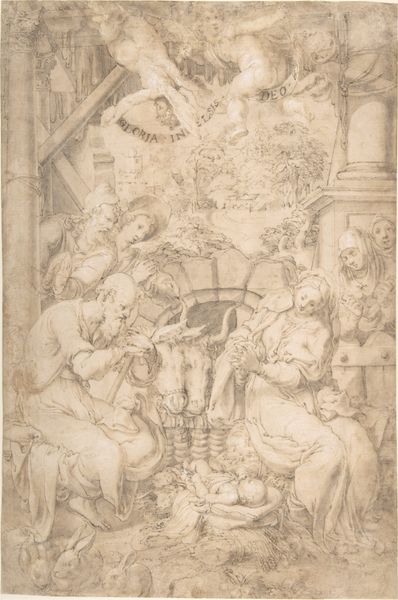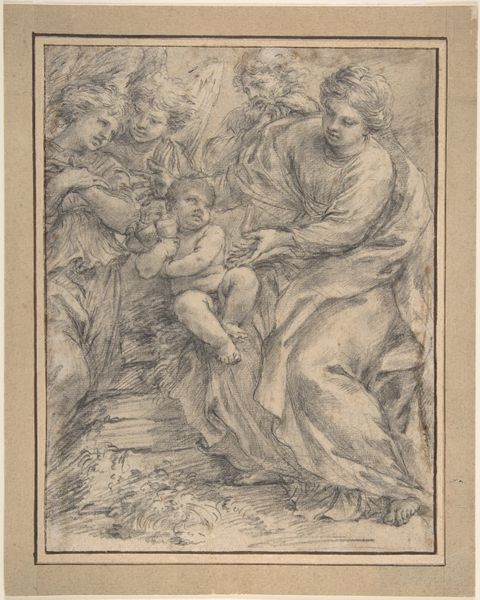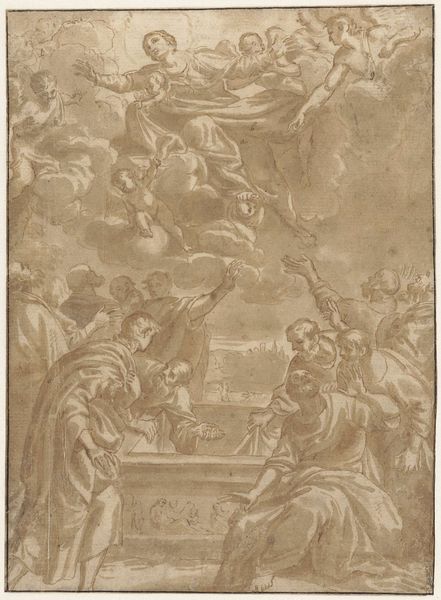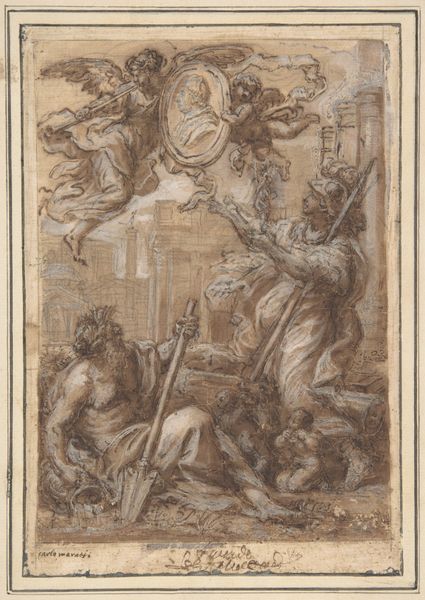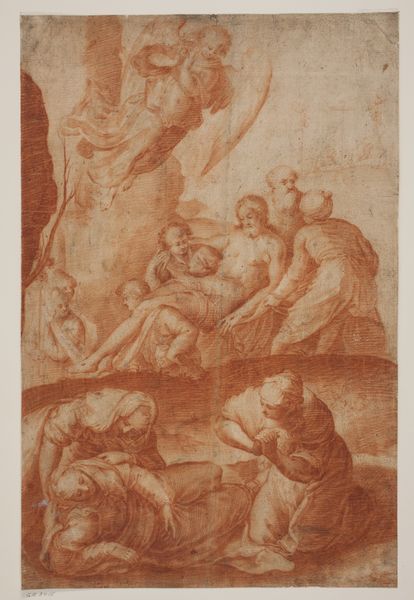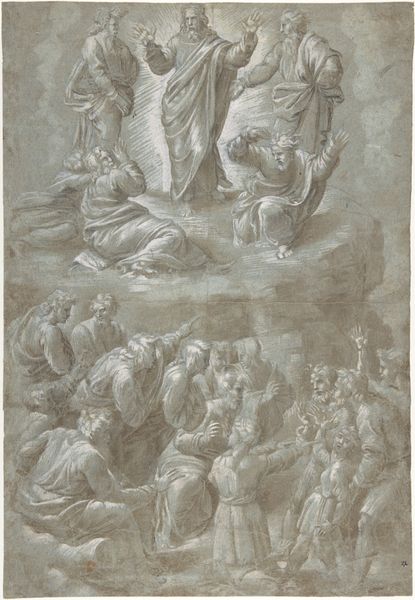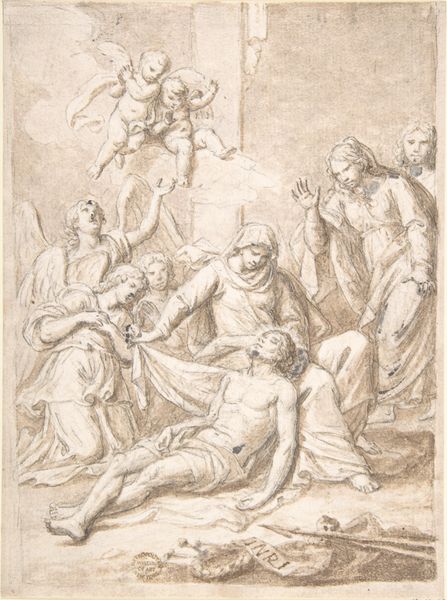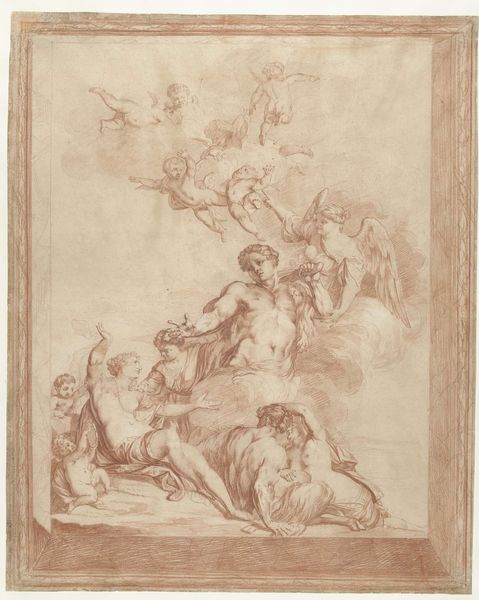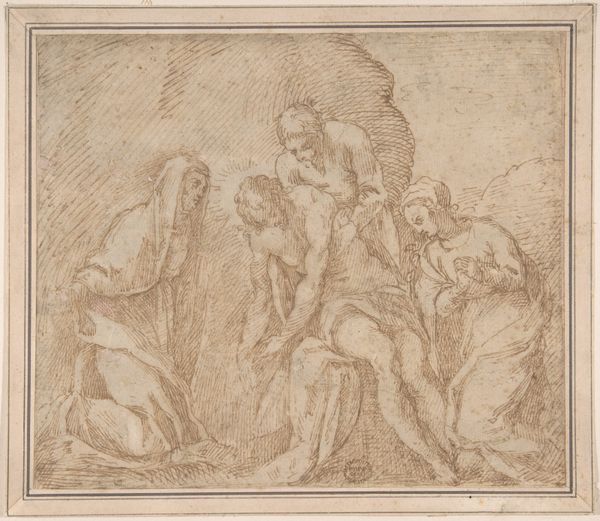
The Madonna and Child Enthroned, Adored by Two Saints c. 1709
0:00
0:00
drawing, charcoal
#
drawing
#
narrative-art
#
charcoal drawing
#
figuration
#
charcoal
#
italian-renaissance
Dimensions: overall: 34.7 x 20.5 cm (13 11/16 x 8 1/16 in.)
Copyright: National Gallery of Art: CC0 1.0
Curator: Take a moment to regard this drawing, “The Madonna and Child Enthroned, Adored by Two Saints” rendered in charcoal around 1709 by Giuseppe Nicola Nasini. Editor: My immediate impression is of something sepia-toned and ethereal, yet there's also a grounded, almost gritty quality to the charcoal strokes. I’m intrigued by that tension. Curator: Yes, notice how Nasini employed charcoal to emphasize volume and imbue the divine figures with a remarkable earthliness. Consider, too, how he layers religious symbols. There are the angels above, the enthroned Madonna, but what does the presence of a skull and what looks like an elaborate scepter mean in this devotional setting? Editor: For me, it's fascinating to consider charcoal itself. Its origin story starts with the burning of wood; literally turning wood into the medium with which something new is constructed, quite resonant for this image. Think about where he would have found this charcoal, and how that affected the drawing! Curator: Absolutely! Charcoal offers that visual dialogue. Speaking of context, the piece exists within a complex tapestry of the Renaissance when cultural memory and imagery were deliberately interwoven, often to serve didactic functions for the viewers, each pose laden with intention. The gesture of blessing, of supplication... These postures served to instruct viewers of all social levels, don't you think? Editor: That’s an interesting angle. The Italian Renaissance was obsessed with craftmanship. But were charcoal drawings like this meant for broad consumption? My thinking is they were commissioned by elites, made by artists dependent on the patronage system to get supplies and make the image, which would in turn cement their power in society. What about all those putti overhead? Curator: It's likely it was part of the culture and served an intimate form of devotional practice. Editor: Regardless, there is a unique juxtaposition. From material means of the charcoal's transformation to the divine iconography, this piece has a story about transformation. Curator: Indeed, a story resonating across centuries, carried on visual symbols with layers of evolving meaning.
Comments
No comments
Be the first to comment and join the conversation on the ultimate creative platform.
